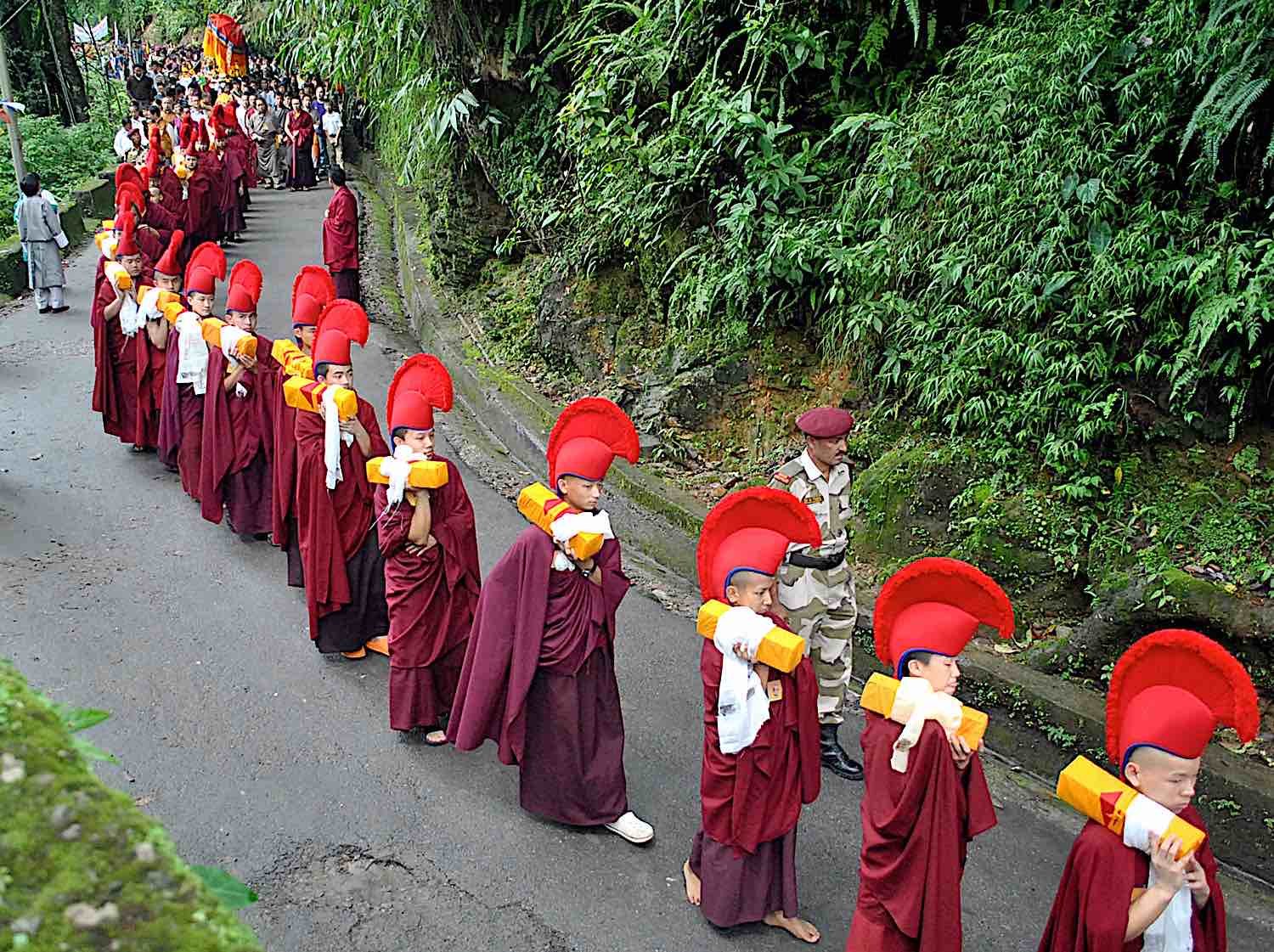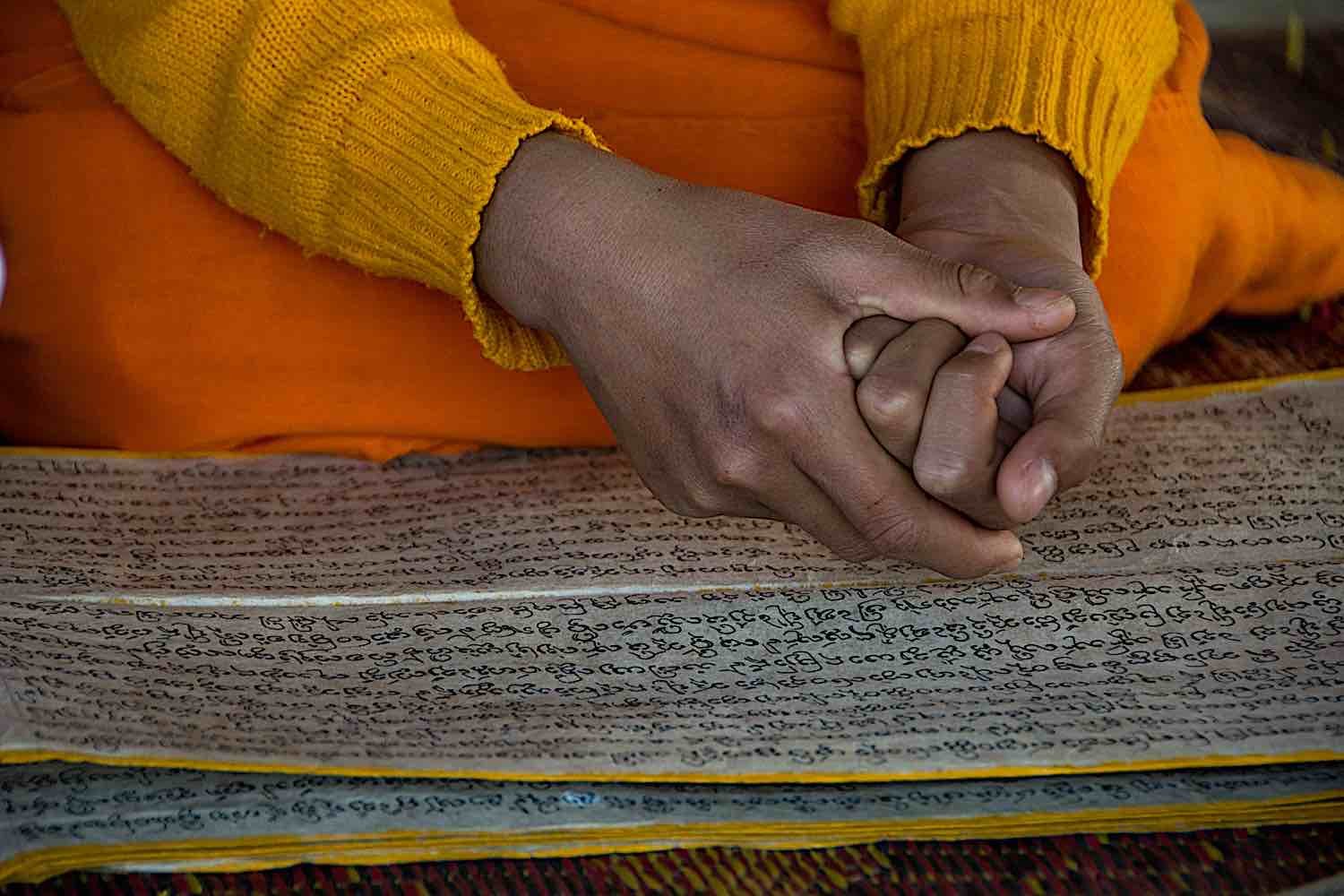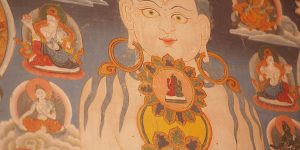How to Read Buddhist texts in the original language and why it is a power practice.
Verbal recitation of Suttas and Sutras is a powerful, profound practice — especially if recited in Pali or Sanskrit. Many teachers recommend trying to recite and read in the original transcribed language, in the language the Buddha spoke. Reading in this way, you can visualize yourself listening to the Buddha. To illustrate the importance, novice Buddhist monks begin their training with recitations of Suttas in Pali, even if they don’t immediately understand.
By Michael Carr
[Biography bottom.]
For modern Buddhists, it can be difficult to comprehend or recite in Pali dialect — the language of the Buddha. [In the case of Tibetan Buddhist texts, try to read in Tibetan.] The very first Buddhist teachings were, of course, passed on orally, until followers began to transcribe them into the various Indo-Aryan languages, including Pali, Gāndhārī, and the complex variety of Sanskrit.

The Language of Wisdom
While it is only natural to do our best to understand Buddha’s words, taking the extra effort to read and recite in the original language can be meditative and illuminating. This goes beyond the benefits of comprehension of the linguistic aspects.
Learning a sacred language can be a personal journey. Like any spiritual practice, the most important virtue is patience. Take your time and explore the sacred texts — line after line — not only seeking the translated meaning, but going deeper into the underlying messages.

Suggestions for learning to read in the native language
- Read various translations in your native language. Even if you do not know any foreign language, it is still important to understand the Dharma message. It is also beneficial to see how various translators approached the original books about Buddha. See how the different wording may tell you a bit more if you think and analyze. See various notes, read about how the author came to some conclusion, and find similarities.
- Approach professional translators with original texts. If you have a particular book that you would like to read word-by-word in original, you can think about asking native speakers for help. It will include the glossary and the translator’s notes that will let you engage in a wonderful journey that will help you understand the original content much better. Remember that it is your dedication and readiness to explore that will assist you!
- Share community meetings and engage in analysis. Talk to your Buddhist leaders in the local community and participate in discussions to know where to start. It might be different for each person, yet it would be safe to assume that any spiritual journey starts with a clear mind and being open to evaluate and analyze without bias and prejudice. Once you achieve some peace and learn to listen, the words of wisdom will reveal themselves to you in more than one language.
- Study the artworks and manuscripts to reveal an understanding. While each book will talk to you through the lens of the author, the manuscripts and the artworks will keep silent and wait for you to explore. Stay calm, listen with your inner being and connect the visual art with the written word. You do not have to “understand” because there is no point that would tell you to stop thinking and continuing with your journey. Just think about learning to understand some Chinese characters or finding connections in the Vessantara Jataka and see that it is not the destination but the journey that counts.

The Role of Buddhism & Printing Technologies
No words can fit the impact of Buddhism on woodblock printing and the transcription of the words of wisdom. As it took the various transmission forms to express the sacred teachings of the Buddha, it has paved the way for numerous manuscripts and books. It was the diversity of printing that also expressed the philosophy and the rebirth. Both illustrations and the texts created the perfect harmony that erased the boundaries between the languages by allowing the wisdom to speak through the ages.

More articles by this author
Search
Latest Features
Please support the "Spread the Dharma" mission as one of our heroic Dharma Supporting Members, or with a one-time donation.
Please Help Support the “Spread the Dharma” Mission!

Be a part of the noble mission as a supporting member or a patron, or a volunteer contributor of content.
The power of Dharma to help sentient beings, in part, lies in ensuring access to Buddha’s precious Dharma — the mission of Buddha Weekly. We can’t do it without you!
A non-profit association since 2007, Buddha Weekly published many feature articles, videos, and, podcasts. Please consider supporting the mission to preserve and “Spread the Dharma." Your support as either a patron or a supporting member helps defray the high costs of producing quality Dharma content. Thank you! Learn more here, or become one of our super karma heroes on Patreon.
Michael Carr
Author | Buddha Weekly
Michael Carr is a translator at TheWordPoint who likes to explore and challenge himself as he seeks peace and harmony. His posts provide accessible and honest discoveries that he wants to share. Follow Michael to learn something new, open up your mind, and find inspiration.













